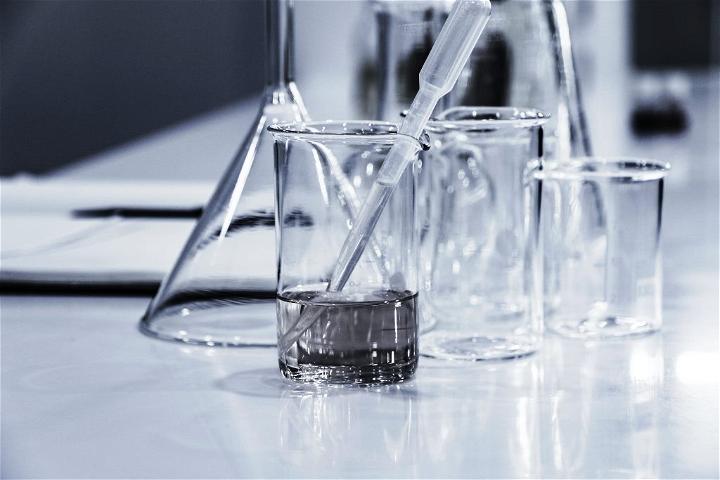With a little imagination, chemistry can be made fun! Even the most difficult concepts are easier to grasp when you realize that atoms and molecules are everywhere, even in places where you least expect them.
Students often struggle with their school chemistry homework. It is hard to find the answers to all those difficult questions. So, when you engage in practical learning and do projects like these, it is easier to understand various concepts. However, you are likely to get stuck with these homework problems, which is why you can consult SweetStudy’s chemistry homework help services. They have tutors for every subject, including chemistry. You can even discuss your chemistry project with them if you want to.

This list of easy chemistry projects is for high school students. All of them are easy enough to do at home or on the weekend with your friends.
1 How to Extract DNA From a Strawberry
You can extract DNA from strawberries using a few household materials. To begin, you need to take a few strands of strawberry DNA and use a blender to break down the cell walls so that the contents of each cell leak into the water. Then add some salt to help extract the DNA.
The salt helps the DNA clump together once it’s in solution, making it easier for you to see. The soap will disrupt any membranes around the strawberry cells and free up their contents (including the DNA).
2 Dance of the Sugar Molecules
You’ve probably already noticed that sugar molecules are long and thin, like strands of spaghetti. Or maybe you haven’t. You might have thought they were more like grains of rice. Sugar molecules are both long and thin, although they can take on different shapes depending on what type of sugar you’re using.
Sugar molecules belong to a class of compounds called polymers, which means that the molecules are made up of many smaller repeating units called monomers. The monomer for sugars is glucose, which is also the name that we use for the sugars we eat (cane sugar and glucose syrup).
3 Who Can Make the Fizziest Volcano?
Here’s a classic, fun project that students will enjoy: building and erupting a volcano out of clay. The goal of this project is to teach students about chemical reactions using baking soda, vinegar, and dish soap. Here’s what you’ll need for your demonstration:
- Clay/plastic/cardboard volcano
- Baking soda
- Vinegar
- Dish soap (optional)
- Red food coloring (optional). Have the kids create their volcano out of clay, cardboard, or plastic. If they are building it out of cardboard, they will need to make sure the structure is sturdy enough to withstand the force of the eruption.
- Then have them pour vinegar into the crater, add a couple of drops of dish soap and food coloring (if desired), then drop in some baking soda—this will cause an eruption! Explain that baking soda plus vinegar makes carbon dioxide gas (this is what bubbles up during the reaction). Adding food coloring allows you to see this better.
- And adding soap makes it, so all those tiny carbon dioxide bubbles stick together and float to erupt at once!
4 Detecting Caffeine in Beverages
One of the most widely consumed stimulants is caffeine. It can be found in coffee, tea, soda, energy drinks, and even chocolate. Some individuals should avoid consuming caffeine for medical reasons; however, it can be challenging to detect the presence of this drug in certain beverages. The good news is that there are special strips to test for caffeine that are easy to use and give you immediate results.
Caffeine test strips are available online or through distributors. The strips function similarly to pregnancy tests; a small amount of liquid is placed on the test strip, which contains a chemical that reacts with caffeine and shows up as a positive result if present in the sample. These strips can be used by adults who want to determine if their beverages contain caffeine or by parents who want their children tested for this drug without visiting a doctor’s office.
It is necessary to note that while these test strips are cost-effective and easy to use, they will not provide you with an exact measurement of how much caffeine any given beverage contains—only whether it is present or not.
5 What Makes Things Glow?
Have you ever wondered why certain things glow? Think blacklight posters, glow sticks, and even your favorite pair of neon socks. What is it that makes them shine as they do? The answer is in the science of fluorescence.
The ability for things to emit visible light after being exposed to ultraviolet (UV) light comes from a substance called phosphor. In its regular form, the phosphor is white and powdery, but it can be added to other materials to make them glow.
Once the phosphor is exposed to UV light, or blacklight as it’s also known, it absorbs the energy from that light and stores it as vibrational energy. That stored energy is then released from the material through a process called luminescence.
This luminescence can only be seen when your eyes are in complete darkness because they need something dark as a background to see what is glowing against it. When you turn off the lights, everything around you looks dark until you wave your wand or crack open that glow stick and begin to see what was hidden right before your eyes!
That magic might not be so glamorous once you realize how simple the science is behind a little thing we call fluorescence!
6 Which Wood Burns Fastest?
This project is a great way to add a little levity to your student’s curriculum while helping them grasp some crucial concepts. Wood burning is an essential skill for many people, particularly those who spend time outdoors.
The most vital step is choosing the right wood to burn. Many kinds of wood burn quickly and have little heat output, whereas others burn slowly and offer high heat value. Ornithologists may also be interested in this experiment to determine which types of wood would be best as nesting material or perching surfaces.
The first step is to collect samples of several types of woods (softwoods such as cedar and hardwoods such as ash). Place samples of each type on ceramic tile or another non-combustible surface. Measure each sample’s mass with a scale. Place one large match under each wood sample and light it at the same time (on a windless day) so that all samples catch fire simultaneously (use candles if it is windy).
Record the time it takes for each match/candle to die out completely. If a sample burns out before its assigned match/candle dies down, then use another match/candle until that sample has burned out completely (meaning there are no flaming embers left). For safety reasons, this experiment should only be conducted outdoors on non-flammable surfaces such as concrete or asphalt with adequate space from any structures or flammable objects.
7 What is the Best Way to Extract Iron From Cereal?
Iron is an essential mineral for the human body. It helps make proteins, hemoglobin, and myoglobin responsible for transporting oxygen throughout the body. Without iron, your students will suffer from fatigue, weakness, headaches, etc.
Several foods contain high quantities of iron, including cereals. An excellent experiment to try with your high school chemistry class is how best to extract iron from cereal. You can do that in several ways:
- By using a magnet (cereal often contains metal shavings)
- By magnetizing a needle and passing it through the cereal
- By heating the cereal until the iron burns off
That is all for today. Try out these projects, and see how fun learning chemistry can be!




